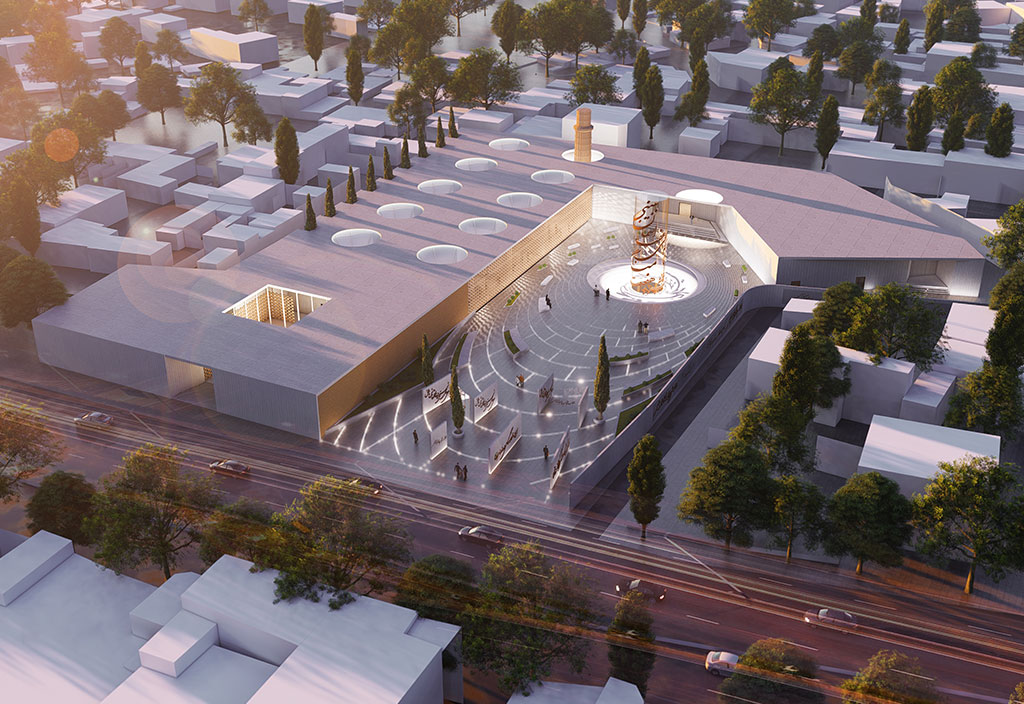
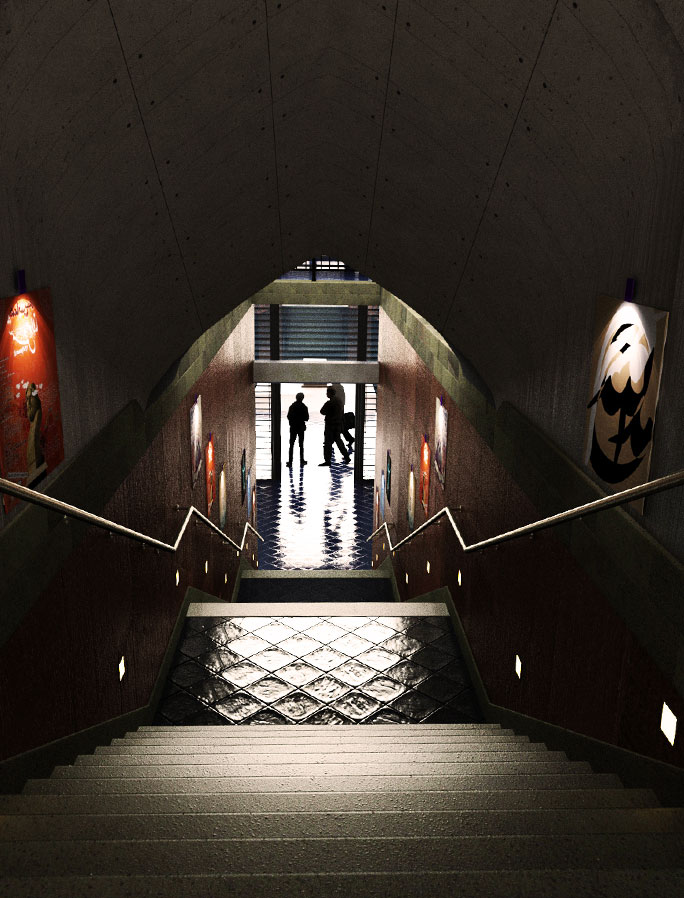
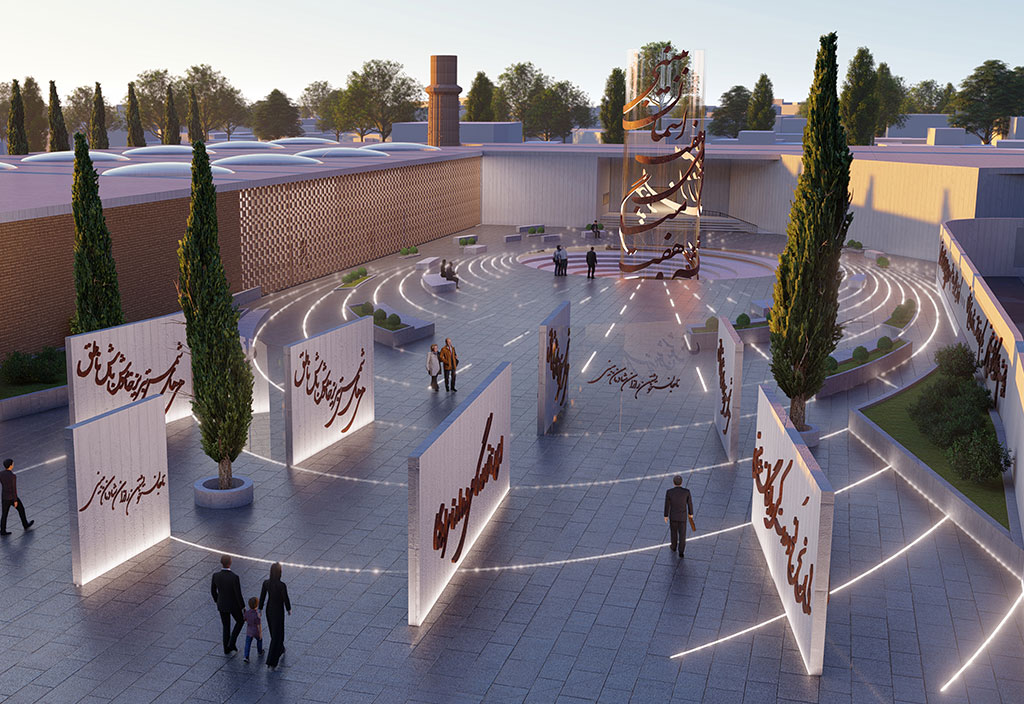
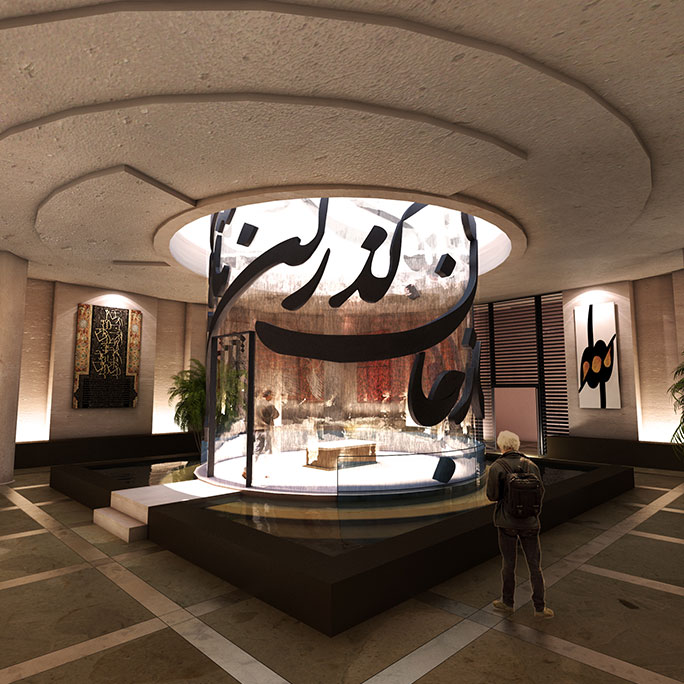
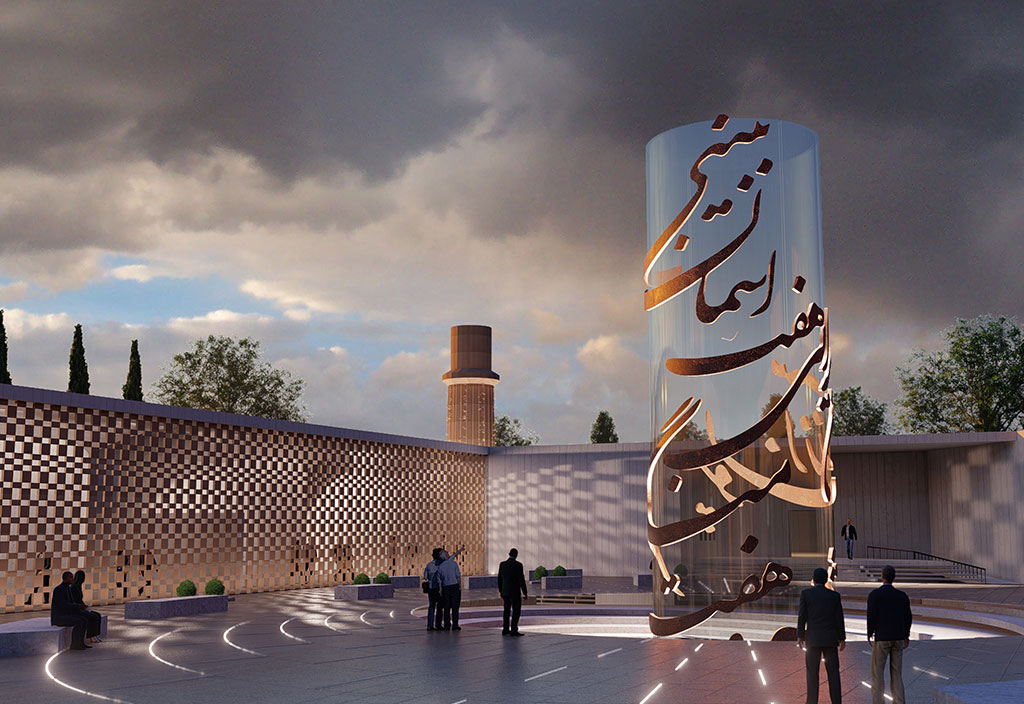
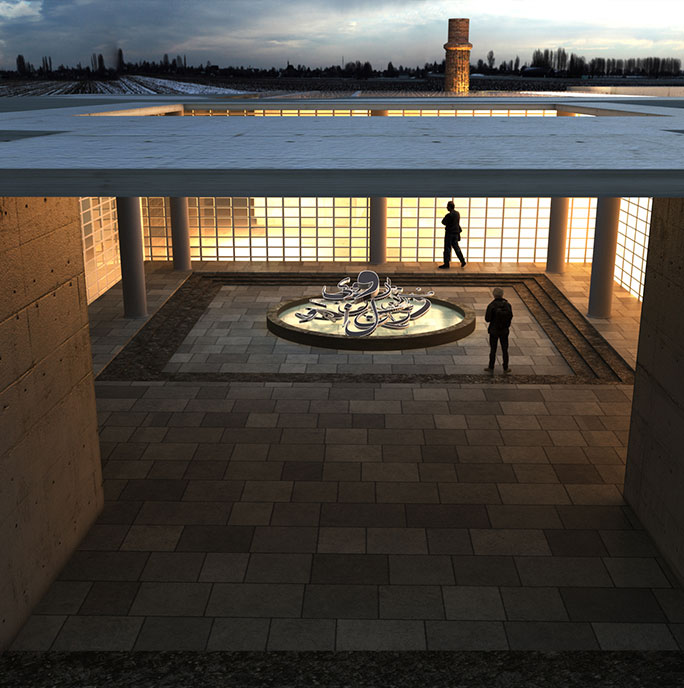
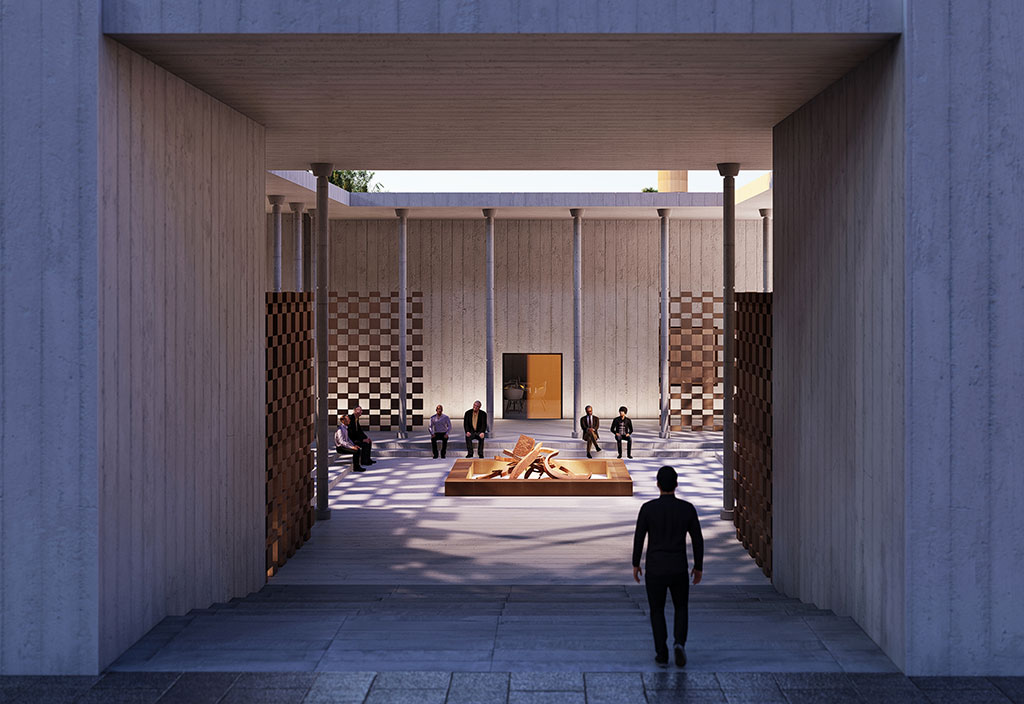
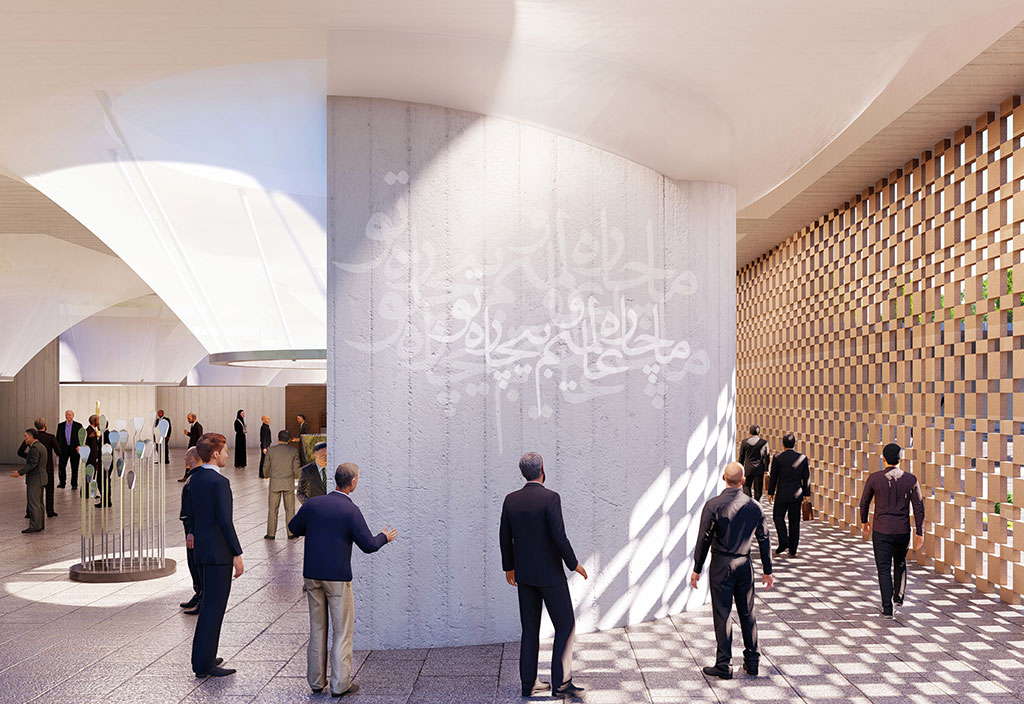

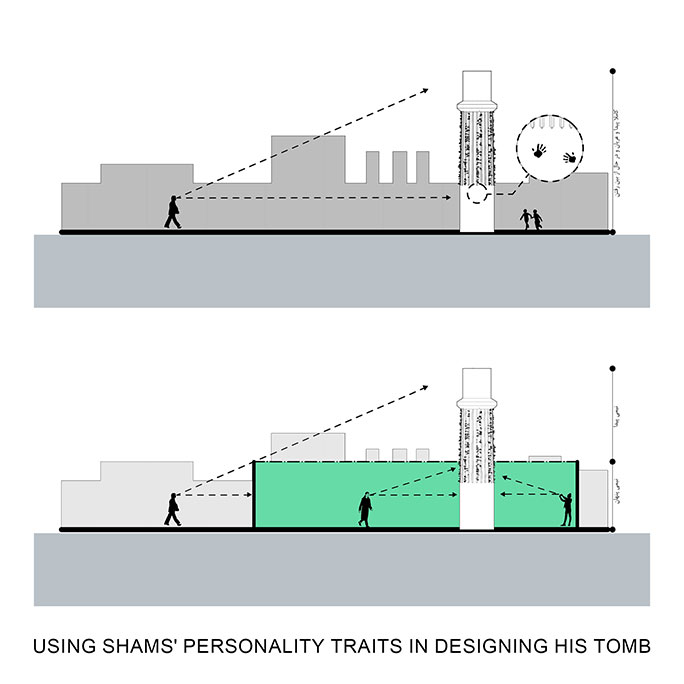
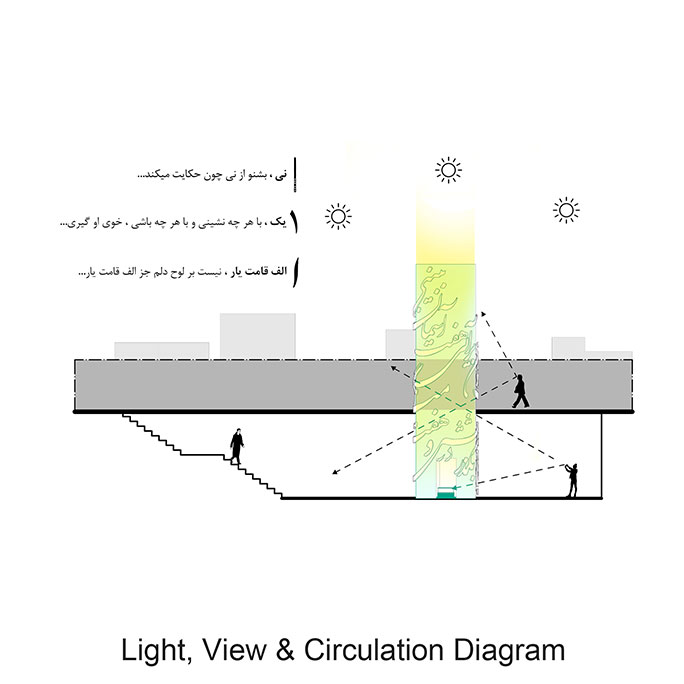
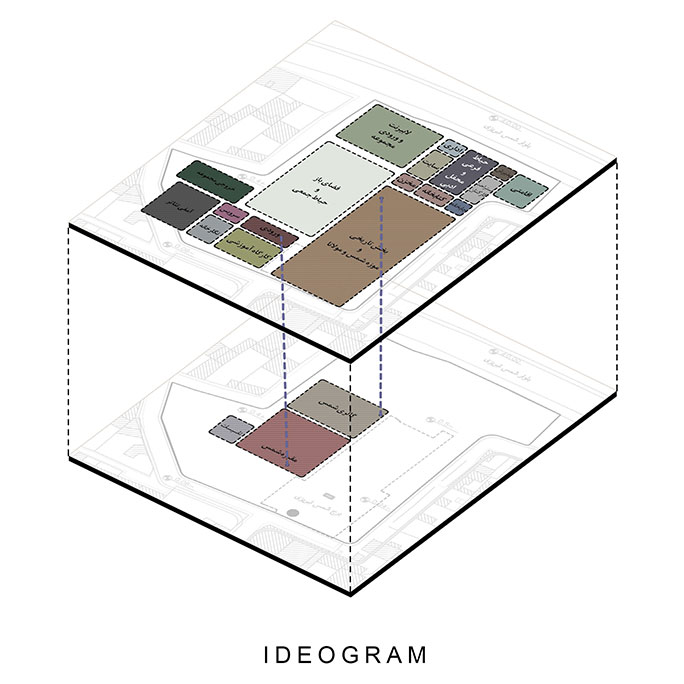
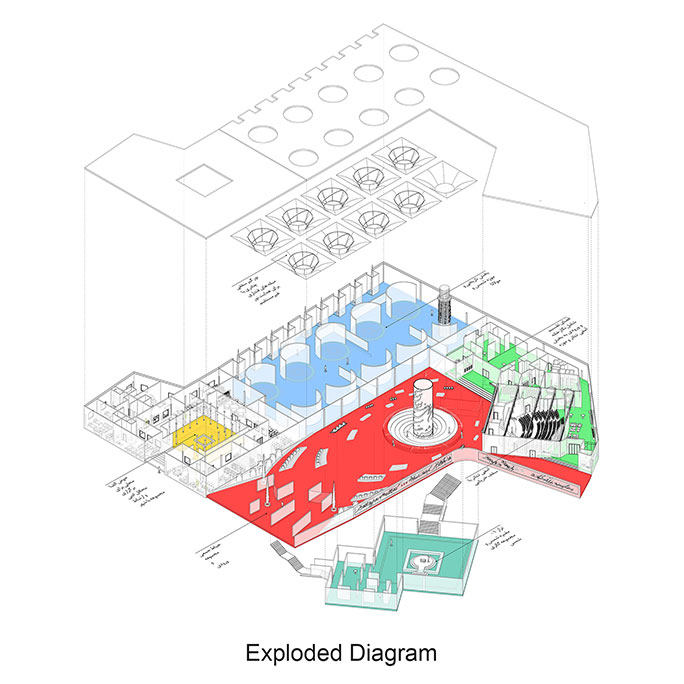

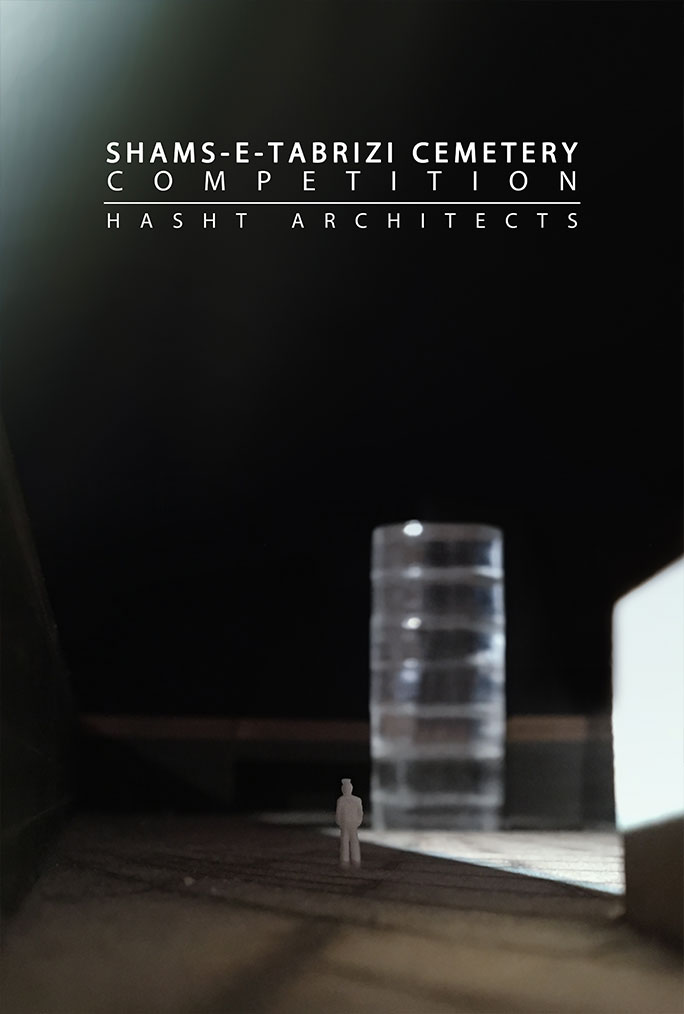
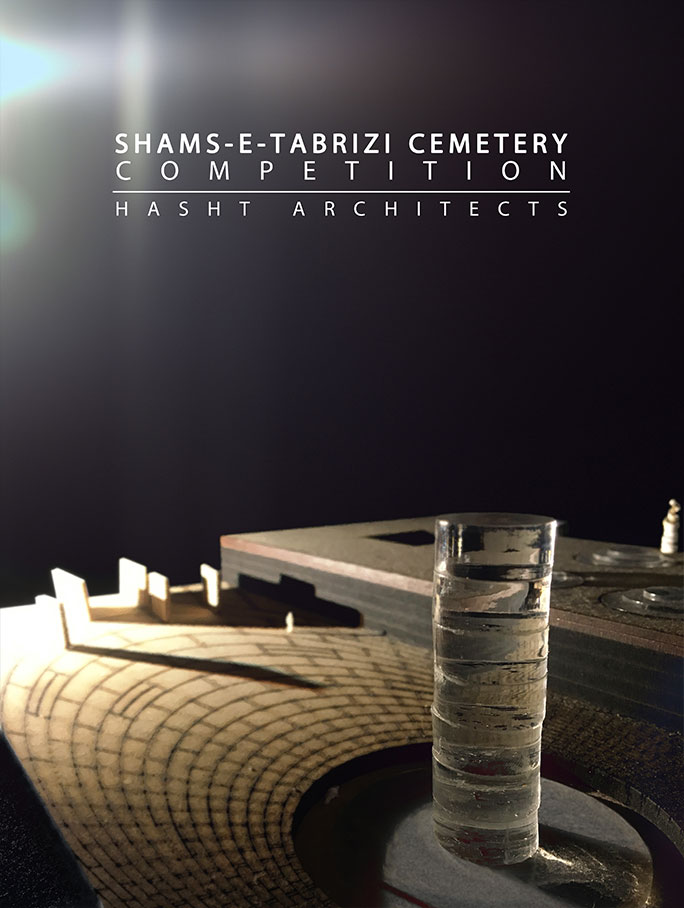
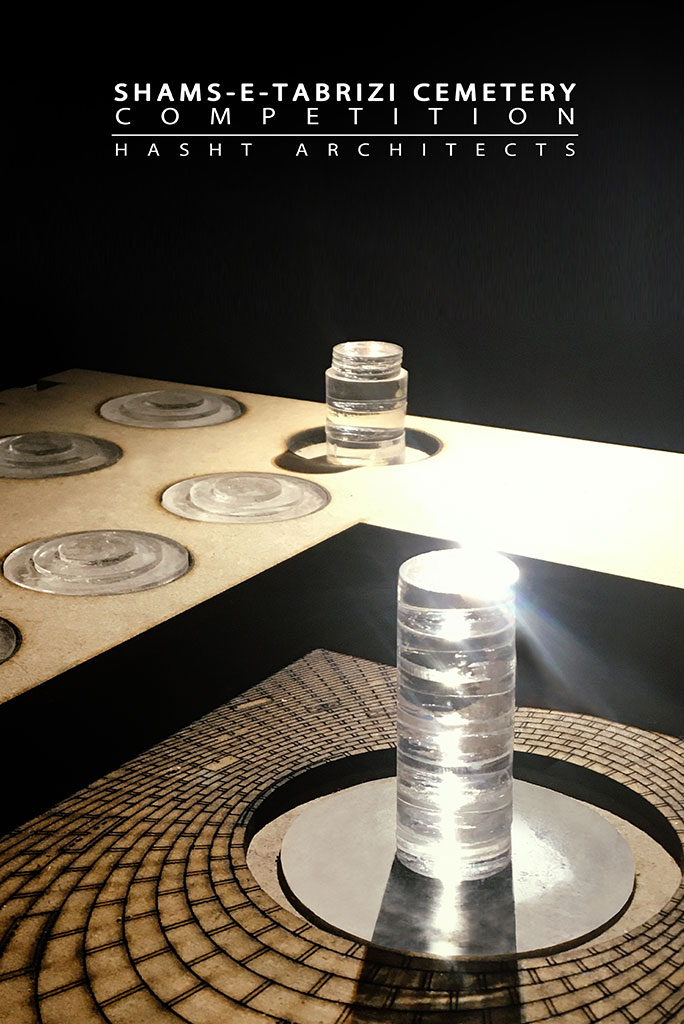

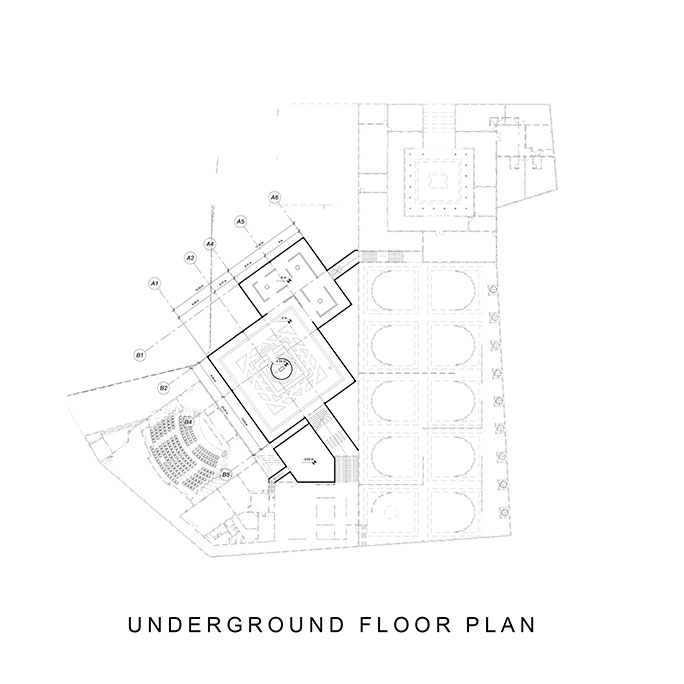
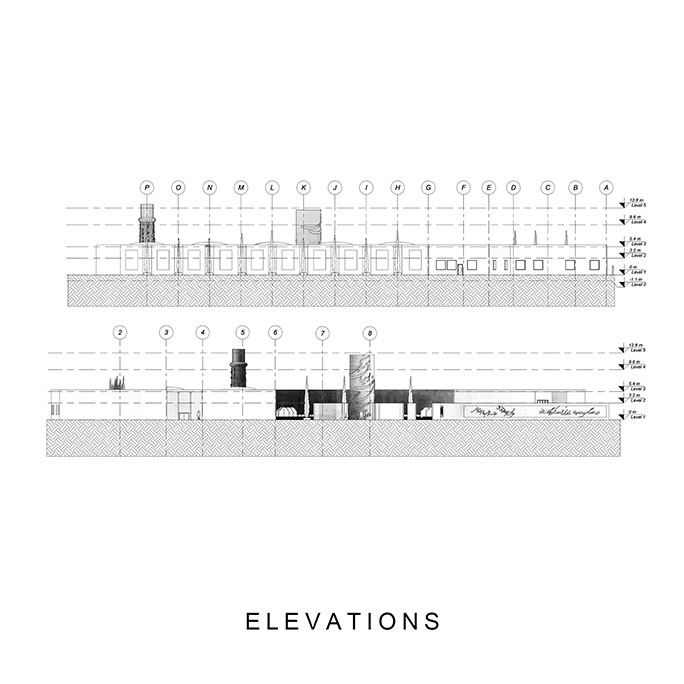




















SHAMS TABRIZI CEMETERY COMPETITION
2013 | Tabriz | Khoy
Shams Tabriz, love knows you, not wisdom...
Shams Tabrizi's way of life was in contrast with the people of his era, and Rumi became an admirer of his romantic ways. Shams Tabrizi tried to influence Rumi, who was adorned with religious appearances, and enrich his inner being. For us, the project of Shams' tomb in Khoy City was more than an architectural project and actually a religious tribute to one of the greatest Sufis in the history of this land. Indeed, the study of Shams Tabrizi's life would be ineffective without his influence on Rumi and the encounter between the two, which was the origin of Rumi's Sufi school and his later works. Therefore, the design of the project followed two main goals. On the other hand, the project should present to the audience the colors of the Sufi life of Shams and the intersection of his life path with Rumi.
On the other hand, physically, the project should provide the required functional spaces by creating a dynamic urban space to serve urban interactions. We started the design process from the most important part of the space, which is the tomb space. "Finding and hiding" was the key word of Shams' character. In fact, Shams was a reality in terms of social effects, and a reality named Rumi was a manifestation of his presence and thought. On the other hand, in terms of its visual appearance, the minaret attributed to Shah Ismail has been the symbol of Shams Tabrizi's tomb for many years.
We considered a glass cylinder as a metaphor for the existence of Shams, around which Rumi's poems were born. It is as if Shams is a hidden presence on whose axis Rumi is once again born, dances and grows. This transparent element does not stand out against the old minaret and there is a magnetic dialogue between the two.
In the next section, we discussed mass and space distribution to provide the desired functional and comfortable spaces. In the distribution of mass and space, an effort was made to present different spatial qualities of open, closed, and semi-open space to the audience and to connect the open space to the flow of the city in order to establish a better dialogue with the city. In the entranceway, there is a 7-layer maze, which shows the different levels of mysticism, and the element and the central space can be found and hidden between the inscriptions of Rumi's poems. After passing through this section, we reach the central space where the element is located. A two-level German, one part of which is found and the other part of which is inside the ground. The closest audience can see the lower floor but does not see the entrance to it and searches for a way to reach it. In the spatial hierarchy, after the central space, we can enter the poetry porch, where the alphabet pool is located in the center. A semi-open space that brings together lovers of Persian poetry and literature and mysticism in the night of his poems. After that, we enter the museum and the exhibition of works. In the museum, there are works of calligraphy and manuscripts. Passing the museum, we go down the stairs, which is a part of the gallery. Breathing space between the semi-transparent space above and the tomb space below. On the way, there is still an opportunity to prepare the mind to enter the tomb. When we reach the bottom floor, we see the tomb, which is enclosed inside a glass cylinder, from which the generous water slides down and falls into the pond, creating a pleasant reverberation in the space. The light from above shines down concentratedly and creates a more spiritual state. To go to the side of the tomb, we have to cross the water pond to reach it. We see a frame from the sky where Rumi's poems move towards the sky in a one-point perspective and polish the soul. In the construction section, in the parts that were located in the historical area, we tried to use surface foundations and light structures to provide the desired fluidity in the design section and not to damage the historical area of the project’s site.
Type: Cultural
Location: Tabriz, Khoy, Shams Tabrizi Tomb
Client: Mirmiran Architecture Foundation
Design Team: Shahab Ahmadi, Ali Ahmadi
Graphics Design: Hasht Studio
Area: 2800m2
Status: Designed
Date: April 2013